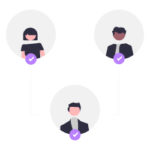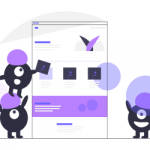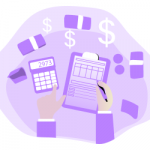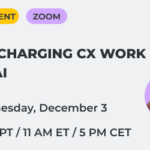In this online interview, we discussed journey mapping in healthcare with Jennifer Fraser, Director of User Experience at Macadamian.
Contents
- 1 The interview
- 2 Jennifer, could you tell us about your role and responsibilities?
- 3 What projects do you typically work on? Who are your clients?
- 4 In your opinion, how is journey mapping in healthcare different from journey mapping in other industries — let's say banking or e-commerce?
- 5 What about the number of touchpoints compared to other industries? Is it different, or is it the same?
- 6 How do you approach journey mapping in healthcare in general?
- 7 Journey mapping is not a one-person thing to do. Who is typically involved in the process?
- 8 Healthcare is a very sensitive topic. Is there anything that should be done differently for healthcare projects when doing the research?
- 9 What are the most critical stages of customer journeys in healthcare, and why do you think they are the most important ones?
- 10 How do you capture patient and provider perspectives within the same map or build separate maps for them?
- 11 How do you decide whether you're building a patient or provider persona?
- 12 What's your advice for those who want to build their first healthcare journey map?
The interview
You can watch the full recording (with the Q&A session included) or read the interview transcript below.
Jennifer, could you tell us about your role and responsibilities?
I'm the Director of User Experience in Macadamian. In that role, I lead our team of user experience researchers, interaction, visual, and graphic designers. Our team works closely with our clients to do research, design, and ultimately deliver products to our customers.
I work closely with the Director of our Project Management Office and the Director of Engineering, collaborating on developing our products. We are a distributed team with an office in Cluj-Napoca, Romania, and another in Yerevan, Armenia. The global office is headquartered in Canada.
What projects do you typically work on? Who are your clients?
Right now, about 80% of all our projects are healthcare-related. Within healthcare, we work across a pretty large spectrum of clients. Some of them are medical device manufacturers. We've worked with large health insurance companies, and we've also worked with a bunch of different small medical startups (they might have a device or just an application).
It's a pretty broad range regarding the types of healthcare customers we have, but there's also a range in our services.
So some clients come to us just for our user experience or research services, and others for our design services.
Other clients come to us for the full spectrum of services — research, design, and development- and we provide them with full end-to-end services.
In your opinion, how is journey mapping in healthcare different from journey mapping in other industries — let's say banking or e-commerce?
Healthcare journey mapping can be different because of the complexity. The persona going through the experience represented in the journey map can have a large number of touchpoints across this journey, especially if the persona has some comorbidities.
They might have several different specialists they need to work with and several different devices they need to monitor to get information about how they're doing. So, there can be a lot of touchpoints across other people, devices, and systems.
“The other thing that you need to think about when you're doing a healthcare journey map is being thoughtful about the emotional state of the persona that you're targeting.”
Experience in other industries like banking and finances can also lead to a heightened emotional state for people. However, with healthcare, we need to be cognizant of the emotional state of the person going through that journey.
We need to consider these things when designing something to help people achieve their goals when dealing with their health. So those are some of the differences and similarities to think about.
What about the number of touchpoints compared to other industries? Is it different, or is it the same?
It depends on the product, but healthcare journeys generally include more touchpoints than other industries. When you're going into the health system or considering a healthcare scenario, there could be different healthcare representatives you're working with, like nurse assistants or nurses, besides the specialists you're meeting with.
And then, depending on where you live and how your healthcare coverage is handled, you have to deal with payment and insurance claims, and there is your responsibility as a patient versus the clinician or the office manager.
So it can get quite complicated, especially if you're dealing with a situation where you might be managing some of your readings and symptoms.

“Healthcare is an incredibly complex ecosystem, so there's a lot of different people, systems, and things to consider when you're drawing or illustrating the map for your persona.”
How do you approach journey mapping in healthcare in general?
We do it carefully for a whole bunch of reasons. It's an interesting question to ask, given that we're in the midst of a global pandemic because that's impacted how we're able to do the research that we typically do. So I'm going to answer it in two ways.
“Pre-pandemic, we would go out and do contextual research.”
We typically pair a user experience researcher with an interaction designer, and they go out and observe representatives of our persona in their contextual environment. And the number of people that we might observe and the context within which we would observe them depends on the project that we're working with.
There were situations where our clients asked also to participate in the research and where we had a representative from the clients come with us and observe the doctors in the context of their work. Once we've done a series of observations, we meet with them and do a journey map co-creation session. We co-create a working map version that we would then turn into a final artifact.
“Now it's a little more challenging to get permission to both recruit within healthcare and get permission to go on-site.”
So we haven't had any journey mapping projects since the pandemic started. We are still determining how we can handle the logistics of getting that rich information without necessarily being able to be on-site, following a doctor around within the hospital setting.
Journey mapping is not a one-person thing to do. Who is typically involved in the process?
It can vary depending on the project. However, typically, a user experience researcher and an interaction designer, working as a pair, would go out and do the contextual research.
Before we even get to that point, we typically would go through a discovery session with the client to understand their goals, what they're trying to achieve, and what research questions they have that we're trying to answer. It leads up to why we decided to do a journey map in the first place.
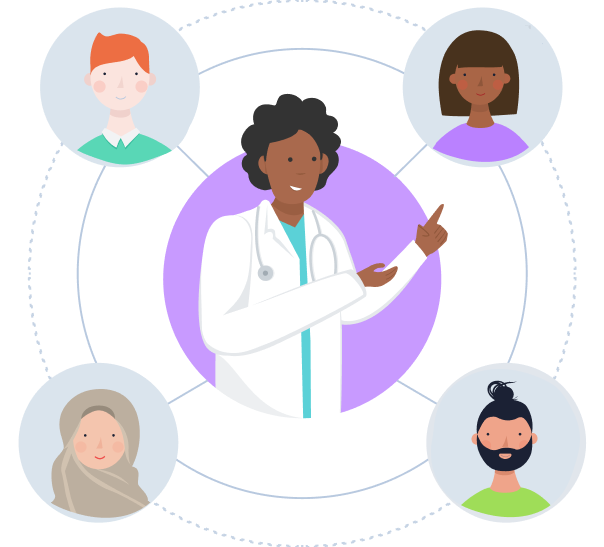
Then, we'll work iteratively with them to develop our research protocol, which the user experience researcher will write out. This protocol documents how we will approach the session and the questions we will ask while observing the clinicians as they're going about their work.
That then gets repeated across the different participants and sometimes in various contexts. Then that information is worked through by both the user experience researcher and the interaction designer. We pair those two roles together to conduct the research because they're coming at things from different perspectives. They see other things through different lenses as they observe the health care professional or the patient going about their business.
Then as we're working through the information again, we'll share parts of that back out to the client. And then, we could co-create that journey map with the client if that makes sense. Other times we'll just create it on our own, share it with them, and get feedback. Making sure it meets their expectations and represents the findings of our research.
Healthcare is a very sensitive topic. Is there anything that should be done differently for healthcare projects when doing the research?
As I've already said, be careful. One thing we need to be aware of is getting really clear consent from the people that we're observing. There are privacy laws, sensitivity, and health information. This means that we, as researchers, need to use a lot of caution in our work and our processes.
Can you share some examples of insights that your research has brought to you? And was there something surprising and completely unexpected?
There's one small story that I like. We were observing doctors doing rounds with different patients who were on dialysis. The kidney specialist went in and approached the system. We couldn't figure out what he was doing because we hadn't observed this with other kidney specialists.

So after observing them for a while, when it came to the point where we could take them aside and ask them questions, we asked the doctor what they were doing. It turned out they were going to the system to look up the patient's name because it wasn't easy for the doctor to see the patient's name on the displays available to them.
For them, it was essential to address the patients by their names. That was how they wanted to start all their interactions with the patients. You might not think about or see that as a high priority.
If we hadn't been there watching them, we wouldn't have been aware of how critical it was to create that relationship between the clinician and the patient. Things like that show the power of getting out and observing people working within their work environment.
What are the most critical stages of customer journeys in healthcare, and why do you think they are the most important ones?
If the product relates to some behavior change or trying to establish some new good habit, the most critical stage of the journey map is the retention phase.
For example, for somebody with diabetes, a dietary change, or going for a walk every day can be those new habits. But it takes time to build up that new habit, and the amount of time it takes varies highly depending on the person and how they're being motivated, their context, who supports them.
There's a lot that can go into understanding their challenges and their needs and how to best support them throughout that retention phase, so that part of the journey can be critical to understand.
“The other extreme is that so many services are abruptly shifting to being delivered online through teleconference or video conference.”
So, we have a whole spectrum of people now trying to figure out how to use this technology to meet with doctors and healthcare workers.
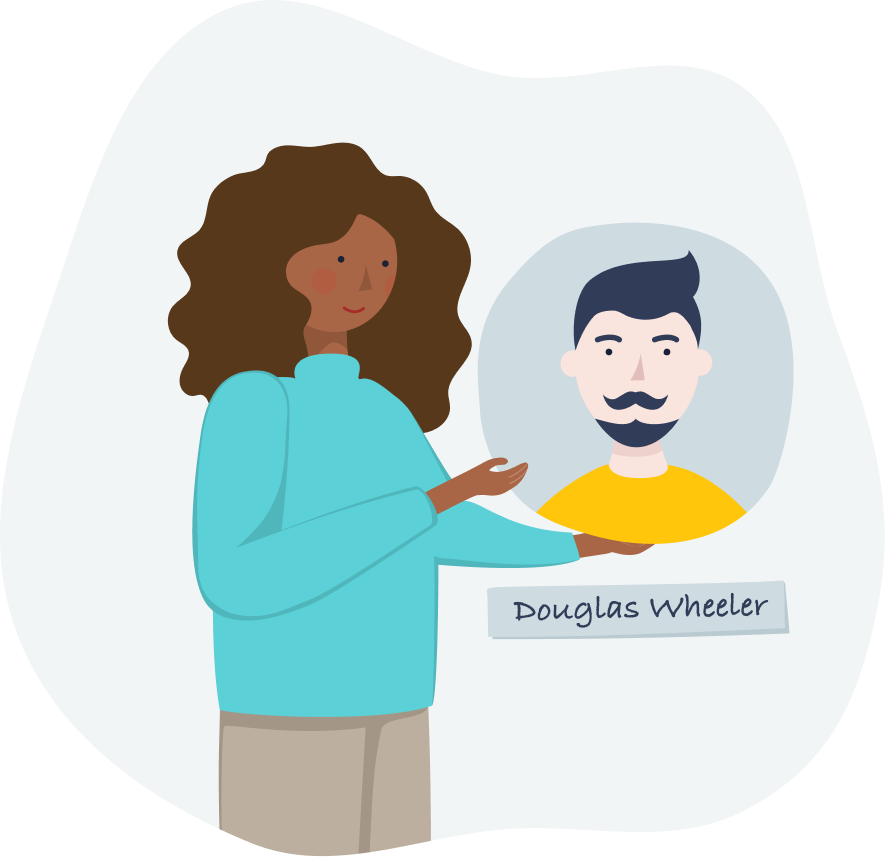
That onboarding process for how they get connected and set up, and how to do that in a way that leaves them feeling safe and secure, is critical. So, I think that both the onboarding and retention parts regarding behavior change or longer-term modifications are essential to consider.
How do you capture patient and provider perspectives within the same map or build separate maps for them?
It depends on the goal of the illustration. What are we trying to articulate through that journey map that can play into whether we show multiple perspectives?
We have done some maps in the past that have shown both the patient and the provider's experiences, because by doing that, sometimes you can see opportunities where they both have a coinciding low point.
You realize that if you could do something to improve that low point for both of them, it would positively impact both of their experiences. Another thing to consider is an opportunity where they both have a high point.
Maybe something can be done to make that high point even higher, which would have a positive boost of both of their experiences. So it's helpful to see some of those intersections between them to understand possible opportunities. But it does depend on the goal behind that visualization and the story you're trying to tell with that journey map.
How do you decide whether you're building a patient or provider persona?
Ideally, it's based on research. Defining the persona is the critical first step because you need to figure out who the persona is and then figure out what their journey will be.
We've talked a lot about ethnographic research. One of the outputs from that research would be persona creation. So we kind of bucket the information we've received, and these are the primary personas that we see based on how they're working, and then we would create their journey maps.

But not everybody can go out and do ethnographic research. Sometimes we create "provisional personas" or a "provisional journey map". And we label them as such to distinguish that they're not based on our primary research, that they're provisional because they're based on secondary research or information from subject matter experts.
Sometimes we can't get access to people or the locations that we need to. In that situation, we'd have a co-creation session where we'd get different subject matter experts into a virtual room and rely on them to help create a typical persona for this role. Then, we would co-create what their journey would be like.
So when we can't do that firsthand primary research, we still create it based on the information we have access to, but we label it differently to make it clear that it's not based on our primary research.
What's your advice for those who want to build their first healthcare journey map?
If you have the opportunity, work with somebody with a journey mapping experience to observe them and see how they go through the research and the creation process before trying to do it on your own.
The other thing to think about if you're doing it for the first time is to be careful about getting consent for the research that you're doing.
“Consider the fact that people can be especially vulnerable, and it's our responsibility as researchers and designers to treat them and their information with the most respect.”
If you're in a situation where it's not possible to ask for someone's help, there's a lot of examples out there, a lot of health and well-being templates available to help you break it down.
It's an iterative process. One way to start is to think about the main phases of the experience the persona is going through. Go through the main stages of the journey, and then identify layers to figure out what the persona is doing in those different phases?
“One of the most important things about doing a journey map is making the invisible visible. Once something is visible, then you can start working with it.”

